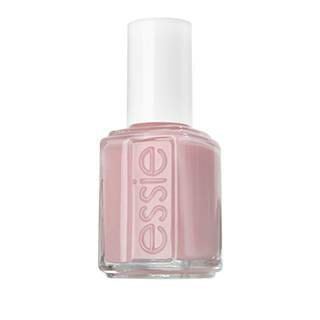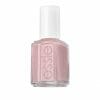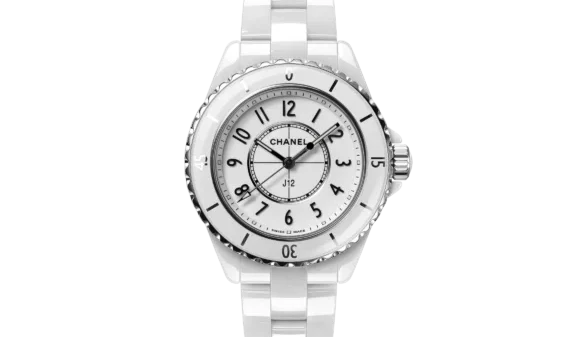What Is Poliosis? Causes And Treatment
Though harmless, this hair condition could be a sign of some underlying medical conditions.
If you are wondering what poliosis hair is and What causes this condition, you are in the right place. Poliosis is a medical hair condition that generates white hair patches due to a lack of melanin. These white hair patches are formed on the scalp, eyebrows, eyelashes, and beard (1). It can affect people of all ages, and there is a variety of causes behind it. We will look at the causes and treatments of poliosis in this article. Scroll down for more information!
What Is Poliosis Or White Hair Patch?
Poliosis is a localized patch of white hair, also known as white forelock. It develops due to a discoloration caused by the absence of melanin (1). Poliosis is a harmless hair disorder that will not jeopardize your health. But it can be a symptom of a serious underlying medical condition like chronic inflammation, vitiligo, melanoma skin cancer, or thyroid disorders.
Depending on the underlying cause of this de-pigmentation, poliosis can be short-term or long-term. It can be found in people of all ages, irrespective of gender.
Poliosis or those white patches of hair on the scalp can be divided into two categories. Let’s go through them in the following section.
Different Types Of Poliosis
- Genetic/Congenital – These white patches of hair can be hereditary at times. They can be present at the time of birth due to the mutation of certain genes or other genetic issues (2).
- Acquired – If not congenital, poliosis is considered acquired. It can be the side or after effect of certain medical conditions that become visible in the later stages of life (2).
What Are The Causes Of Poliosis?
There are various causes behind the formation of white hair patches on the scalp (2), (3).
- Genetic Disorders: Poliosis can be caused due to hereditary or genetic disorders like piebaldism, Waardenburg’s syndrome, Marfan’s syndrome, tuberous sclerosis, Vogt-Koyanagi-Harada (VKH) syndrome, giant congenital nevus, and Alessandrini syndrome.
- Autoimmune Diseases: Autoimmune diseases can cause a loss of melanin pigmentation. Conditions like vitiligo, hypogonadism, hypopituitarism, skin cancer, thyroid diseases, sarcoidosis, GAPO syndrome, neurofibromatosis, idiopathic uveitis, intradermal nevus, post-inflammatory dermatoses, halo nevus, post-trauma, and pernicious anemia, often co-occur with poliosis.
- Others: Poliosis has also been connected to inflammatory, benign, and malignant neoplastic entities (2). It may also connected to alopecia areata, melanoma, herpes zoster (shingles), halo moles, radiotherapy, hypo or hyperpigmentation of eyes, melanization defects, Rubinstein-Taybi syndrome, dermatitis, albino, leprosy, injuries, aging, stress, and certain drugs.
How Is The Condition Diagnosed?
White hair patches are a clear and definitive sign of poliosis. As this hair disorder is not associated with a single medical condition, it is important to go for a thorough check-up for proper diagnosis. If a child develops patchy white hair, it can be diagnosed as poliosis, as white hair is uncommon in kids.
Getting a check-up is imperative as poliosis can be a sign of a serious medical condition like inflammation or skin cancer. The healthcare professional will go through the detailed medical history and family record of the patient. After that, the following assessments would be carried out:
- Complete physical inspection
- Nutritional survey
- Endocrine survey
- Blood test
- Analysis of a skin sample
- Neurological causes
Is There Any Effective Treatment?
Although there are not many treatment options available for poliosis, there are some viable treatments to reverse poliosis when paired with other ailments.
Research shows that skin grafting, followed by light therapy can reverse poliosis related to vitiligo (4). Another study conducted in 2016 showed that laser therapy sessions paired with daily oral medication might bring back 75% of the color in affected areas over a period of six months (5).
Treatment for hereditary poliosis is yet to be discovered. Since poliosis itself is not a serious cause of concern, most people simply dye their hair to cover the white patches. Anecdotal evidence suggests that taking steps, like reducing stress and eating healthy, to prevent premature graying of hair can also reduce patchy hair.
Poliosis is essentially a lack of pigment in the hair follicles, which causes the hair to turn white or gray. The condition might be present from birth or develop suddenly at any age. While poliosis is not a life-threatening illness, it can affect the hair on the scalp and face. Because poliosis is not a severe health concern, most people just color their hair to disguise the white areas. Anecdotal data suggests that taking actions to avoid premature graying of hair, such as lowering stress and maintaining a nutritious diet, can also lessen patchy white hair. Consult your doctor to rule out any underlying conditions causing your symptoms.
Frequently Asked Questions
Is poliosis rare?
Yes. Poliosis is rare. It has been documented to affect 1 in 40,000 people.
Is poliosis vitiligo?
No. Poliosis and vitiligo are different conditions. Poliosis is the lack of melanin and melanocytes in hair follicles. Vitiligo is the lack of melanin in the skin. However, poliosis and vitiligo may co-occur.
Can poliosis cause blonde patches on hair?
Yes. Poliosis usually causes white streaks or patches on hair, but some people may also notice blonde streaks or hair patches.
Sources
- Bansal, Lalit, Timothy P. Zinkus, and Alexander Kats. “Poliosis With a Rare Association.” Pediatric Neurology 83 (2018): 62-63.
https://www.researchgate.net/publication/322998910_Poliosis_With_a_Rare_Association - Sleiman, Rima et al. “Poliosis circumscripta: overview and underlying causes.” Journal of the American Academy of Dermatology vol. 69,4 (2013): 625-33.
https://pubmed.ncbi.nlm.nih.gov/23850259/ - Neri, Iria et al. “Poliosis and Neurofibromatosis Type 1: Two Familiar Cases and Review of Literature.” Skin appendage disorders vol. 3,4 (2017): 219-221.
https://www.ncbi.nlm.nih.gov/pmc/articles/PMC5697512/ - Awad, Sherif S. “Repigmentation of poliosis after epithelial grafting for vitiligo.” Dermatologic surgery : official publication for American Society for Dermatologic Surgery [et al.] vol. 39,3 Pt 1 (2013): 406-11.
https://pubmed.ncbi.nlm.nih.gov/23294472/ - Jung Min Bae, MD, PhD, Hyuck Sun Kwon, MD, Ji Hae Lee, MD, PhD & Gyong Moon Kim, MD, PhD (2016). Repigmentation Of Poliosis In A Patient With Segmental Vitiligo.
https://www.jaad.org/article/S0190-9622(16)01334-7/abstract




























